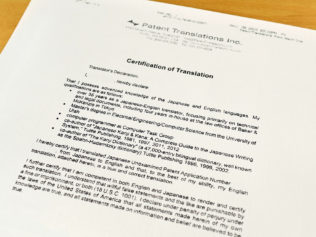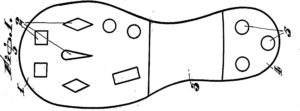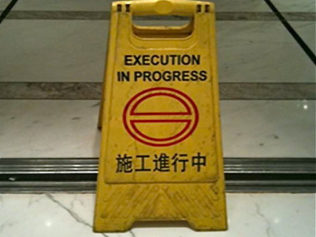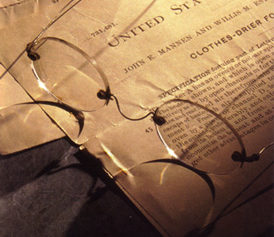Their worst work is my best work
If you ever get a translation of a published patent from me that is full of run-on sentences, inconsistent terminology and weak logic, you may just be looking at my best work.
When translating patents for information or litigation support, our job of is like that of a court interpreter — we reproduce what was said without omission or embellishment and strive to make ourselves invisible. Our clients would not be well served if we added matter to fill in the gaps in an incomplete disclosure, or if we took on the role of editor so that the translated claims seemed better supported by the specification than they were in the original. And though it might be tempting to unify disparate terminology, by doing so, we could be denying our client a useful argument against the patent or — if our client is on the other side — producing a false sense of security that risks being shattered by a more accurate translation when used in court.
To the non-translator, turning bad writing in one language into bad writing in another might appear to be a simple task, perhaps even easier than producing a polished final product from a high quality original, but nothing could be further from the truth.
Imagine, if you will, a carpenter who is given a bookshelf and asked to produce a copy of it. If the joints are square and the screws are driven straight, then all that will be required of the craftsman is good carpentry. But if the original workmanship is shoddy, the task of faithful reproduction becomes much more difficult. The slope of a crooked shelf must be exactly matched. Nails that were carelessly bent over by a badly wielded hammer must be meticulously bent into that same shape with pliers. Finally, the overall structure of the copy, which is the sum of the individual flaws, must be just as rickety as the original, but no more so.
It’s the “no more so” part that is really hard. The translation must be readable . The information must be conveyed as clearly as possible. But as with any other form of reproduction, translation necessarily results in signal-to-noise loss, and part of the translator’s job is to compensate for this, so that the clarity of communication in the translation is comparable to that in the original. As anyone who has photocopied a faded fax will know, the loss is always tends to be more pronounced if you start with a low-quality original. That is why people who are new to translation sometimes produce gobbledygook that sounds as if it were written by the inmate of a mental hospital and, when questioned, reply with the familiar words, “But that’s what it says in the original.” The true skill of the translator lies in being able to reproduce the original content, without omission or embellishment, while maintaining the clarity and internal logic of the original, no matter how sketchy that may be. If you are interested in a methodology for doing this, read on.
Matters are made worse by the fact that sloppy writing is often the handmaiden of sloppy thinking. Badly worded specifications are also likely to include conclusions that do not follow from their premises, internal contradictions, misclassifications and straightforward misstatements of fact. A good translator will be extremely reluctant to reproduce such problems without first carefully double-checking and then seeking a second opinion from a colleague, to be sure that the error is, in fact, in the original writing and not in their understanding of it. In addition, when the technology being described is complex, these problems can make it much more difficult for the translator to fully grasp the invention being described.
Unfortunately, for monolingual purchasers of patent translations, it is very hard, if not impossible, to determine whether the badly written document on their desk is a well written specification that was badly translated, or a badly written specification that was expertly translated. In this regard, one can rely only on long relationships and trust. But if it comes off my desk, and it is less than elegant, rest assured that it is a carefully crafted labor of love.
Martin Cross
Japanese Patent Translation









